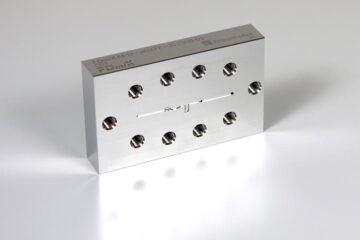For the first time bone mineral content can be shown in different anatomical areas of the body

A team of Spanish researchers set out to establish the reference values for skeletal bone status in the course of a human being’s lifetime. This is a “very important piece of work given the changes in bone metabolism of the Spanish population”, Soledad Aguado, the main author of the work and researcher at the UAH explains to SINC.
The research, published in the latest number of the Skeletal Radiology Journal, is the first that has been undertaken in Spain in subjects whose ages ranged from 0 to 80 years of age. The study was performed in 1,120 subjects from the Community of Madrid, all of whom had a sedentary lifestyle.
The sample was divided into 16 groups at 5-year age intervals. Each group had a bone densitometry scan using the technique known as “Dual X-Ray phototonic absorptiometry [DXA]. The aim was to quantify bone mineral content in the whole body and in different and separate areas of the body. The results show that there are big differences in gender in the mean values of bone mineral content for the head and trunk of the body (between 16 and 25 years) and legs and arms (between 16 and 70 years). In all cases, women have less bone mineral content.
Previous studies confirmed that the bone mineral content increases from birth until 25 years of age and reduces from 26 until 40 years of age, the time at which it starts to stabilize. From 56 years old the reduction in bone mineral content becomes more acute. However, women reach their maximum bone mass at an earlier age than men: the increase of total bone mineral content occurs from birth until 20 years of age. The researcher from Madrid explains that these values “offer a useful piece of reference information when comparing them with sedentary populations from other geographical areas, or a population with osteoporosis or sportsmen or women”.
Osteoporosis in Spain
According to the Spanish Society for Bone Research and Mineral Metabolism [la Sociedad Española de Investigación Ósea y Metabolismo Mineral] (SEIOMM), osteoporosis is a disease that affects women more than men. Today two million women already suffer from this disease and it causes about 25,000 bone fractures per year as a result of deterioration in the micro-architecture of bone tissue caused by osteoporosis.
The appearance of this disease is caused mainly by an ageing population and the prevalence of this disease is increasing on a daily basis. Currently, osteoporosis affects 16% of people older than 50 years of age.
Media Contact
More Information:
http://www.plataformasinc.esAll latest news from the category: Health and Medicine
This subject area encompasses research and studies in the field of human medicine.
Among the wide-ranging list of topics covered here are anesthesiology, anatomy, surgery, human genetics, hygiene and environmental medicine, internal medicine, neurology, pharmacology, physiology, urology and dental medicine.
Newest articles

For microscopic organisms, ocean currents act as ‘expressway’ to deeper depths
New research shows how tiny plant-like organisms hitch a ride on ocean currents to reach darker and deeper depths, where they impact carbon cycling and microbial dynamics in the subtropical…

FDmiX: Fast, robust series production of nanoparticles
Nucleic acid-based medications such as mRNA vaccines are opening up new therapeutic approaches. These active ingredients must be enclosed inside nanoparticles to ensure that they get to where they are…

Sensor measures oxygen content of breath
Oxygen saturation in the blood that is either too low or too high can cause physical harm or even death. This is why patients’ oxygen concentraions are monitored continuously in…





















